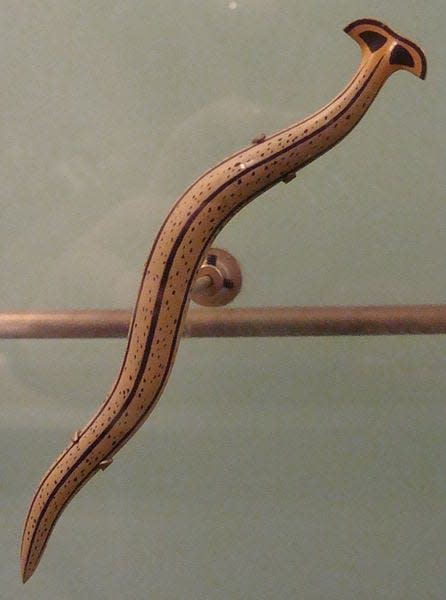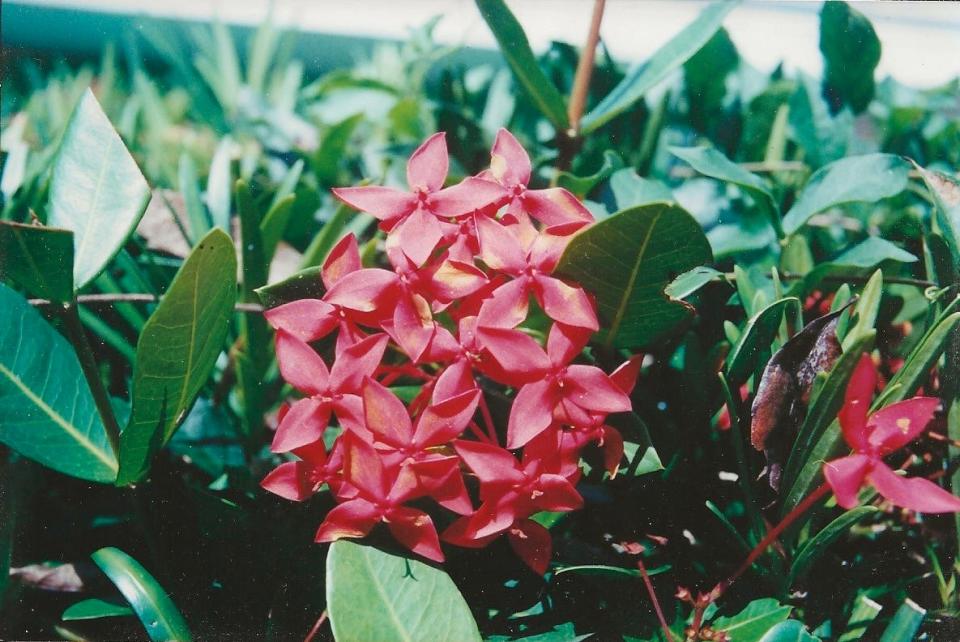These invasive hammerheads are lurking under your feet, and wrecking earthworm populations

You may never see them, but if you have a garden or greenhouse – or just a group of potted plants on a patio – hammerhead flatworms (aka arrowhead worms) are lurking.
Flatworms – called land planarians – invaded Florida long ago, probably arriving from their Southeast Asian homelands in plants and soil. The species of hammerhead worm that’s become common here has also spread across the Southeast up to Washington D.C., and is even found in California.
These strange critters – up to 15 inches long, but usually much shorter – are typically tan, with a black stripe running from their shovel-shaped head to their tail. Active at night, these carnivorous hammerheads glide along in search of their main prey – earthworms. When they track down an earthworm, they envelope it with their bodies, smother it with thick mucous and then secrete a paralyzing neurotoxin.
During daylight hours, however, these predatory flatworms (which I’ve dubbed ‘’wormwolves’’) rest in moist soil and under shrubs and mulch. Their neurotoxin may be harmful to humans, so avoid touching them. The best way to destroy flatworms is by crushing them with your shoe.
Indoor beauty for indirect light? The wide world of succulents have you covered
Dead ringers
At least two common landscape plants frequently demonstrate a distressing tendency to develop a ring of foliage surrounding a central dead zone.
The two plants prone to this growth habit – bulbine and African iris – can eventually become unsightly despite their lovely flowers. I know of no way to prevent this problem other than digging up the plants, dividing the clumps and replanting.
Xanadu philodendron’s size makes it versatile
A great way to add Philodendron selloum’s tropical vibe – but on a much smaller scale – is with a related species called Xanadu philodendron.
Like its larger cousin, Xanadu features exotic, deeply lobed foliage. But instead of growing eight feet tall, it’s rarely half that height. Although suitable for full sun or moderately deep shade, Xanadu – which, like P. selloum is native to Brazil – does best in bright, filtered light. And though not strictly necessary, organically improved soil and deep mulch produce the most attractive plants.
Once established, Xanadu tolerates drought and is surprisingly cold hardy: I’ve seen handsome specimens in Savannah’s historic squares in midwinter. Plants also thrive in screened enclosures and even indoors if a sufficiently large spot in bright, indirect light is available. Propagate by division.
Sturdy native grass isn’t flashy
Florida gamma grass, also called dwarf Fakahatchee grass, doesn’t boast noteworthy flowers. But it’s an airy, fine-textured species (Tripsacum floridana) that’s generally under three feet tall. The narrow leaves stir gracefully even in light breezes. This plant thrives on well-drained sites in full or part-day sun and tolerates moderate drought. Its modest size makes it useful for foundation plantings, shrubbery borders and large planters. Propagate by division.
Super sweet in the sun: Ornamental sweet potato vines offer a variety of shapes and colors
Plant to ponder: Ixora hybrids
Numerous hybrids have been developed from the 300 or so species native to Africa and Asia.

Ranging from 2 to 10 feet tall, these free-flowering plants tolerate sun but prefer bright, filtered light. Propagate with warm-season cuttings.
This article originally appeared on The Ledger: Invasive hammerhead flatworms are wrecking native earthworm population

